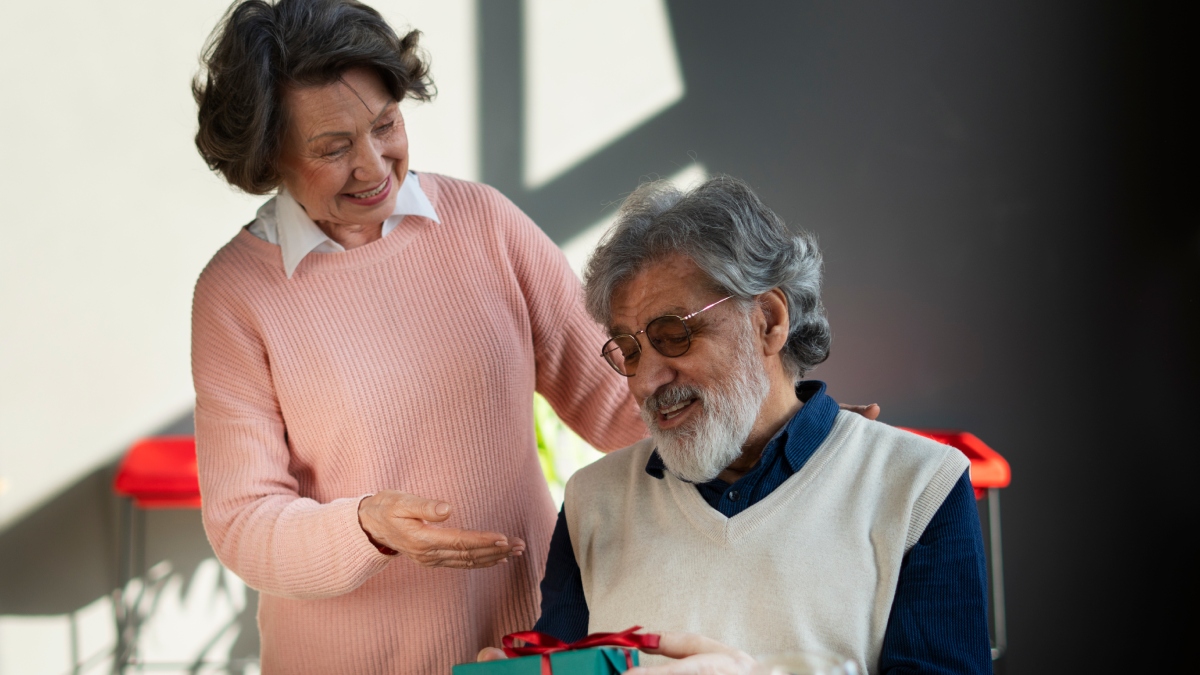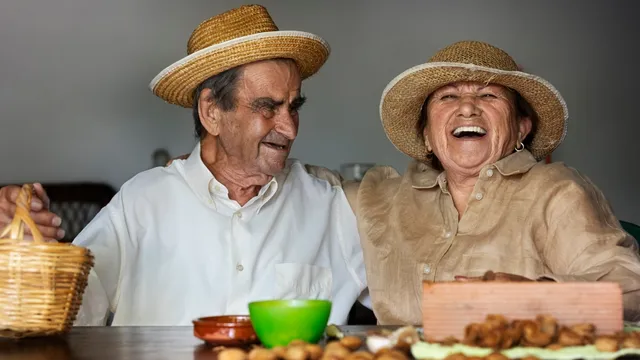- By Dr Sadhana Kala
- Thu, 02 Oct 2025 11:52 AM (IST)
- Source:JND
Aging is just another word for living – Cindy Joseph
India's reputation as a "young nation" often overshadows a significant demographic shift. Currently, the elderly population in India, defined as those aged 60 and older, stands at 150 million, surpassing Japan’s population of 124.3 million. By 2050, India will have about 340 million elderly individuals, nearly one-fifth of its total population.
This “greying of India” brings both challenges and opportunities across various sectors, including healthcare, social security, family structures, and the economy.
“We Raised Them, But We’re Alone”
In a quiet neighbourhood of Lucknow, 72-year-old Kamla Devi spends much of her day watching television. Her two sons work in Dubai, regularly sending money and making video calls once a week. However, what she truly longs for is companionship. “They send money,” she says, adjusting her dupatta, “but money cannot sit with you when you are unwell.”
The Numbers Behind the Stories
Kamla’s experience is not unique. Across urban areas in India, thousands of elderly parents live alone, financially supported by their children but lacking emotional connection. The statistics are striking. According to Census data and UN projections:
• In 1951, India had 20 million elderly individuals.
• That number climbed to 138 million by 2021.
• By 2050, seniors are expected to constitute nearly 20% of India’s population.
Dr. Poonam Muttreja from the Population Foundation of India warns, “India is aging at a pace we are unprepared for. Unlike developed countries, where aging followed wealth creation, we are growing old before we are rich.”
The Struggles of Aging
Health Concerns
Chronic diseases such as diabetes, hypertension, and arthritis increasingly burden older Indians. Heart disease is also on the rise. Additionally, mental health issues, including depression and dementia, often go undiagnosed.
“Most district hospitals don’t even have a geriatric ward,” says Dr. Vinod Kumar, a geriatric specialist in Delhi. “For an older person in a small town, accessing quality healthcare often requires traveling hours to reach the city.”
Economic Challenges
Nearly 90% of India’s workforce operates in the informal sector, lacking pensions or retirement savings. Government initiatives, such as the Indira Gandhi National Old Age Pension, provide a meager sum of ₹200–₹500 per month.
“Pensions today don’t even cover bus fare, let alone the cost of medicines,” states Mathew Cherian, a veteran social worker and former head of HelpAge India.
Social Challenges
The traditional joint family system, once a vital support network for older individuals, is gradually diminishing. Migration and the trend toward smaller households often leave many elders feeling isolated. A 2023 survey by HelpAge India found that one in five elderly Indians reported experiencing abuse, frequently at the hands of family members.
Tradition Meets Reality
Indian culture traditionally holds elders in high regard, with proverbs emphasizing the importance of their blessings. In rural areas, the oldest community member typically presides over festivals and rituals. However, this cultural reverence does not always translate into adequate care for the elderly. Rising living expenses, longer working hours, and the shift toward urban lifestyles have strained traditional family support systems. Sociologist Shiv Visvanathan bluntly states, "We respect elders in principle, but in practice, we often abandon them to loneliness."
Laws on Paper
India has enacted various laws and policies aimed at protecting its older citizens. The Maintenance and Welfare of Parents and Senior Citizens Act, 2007, mandates that children care for their parents and allows seniors to reclaim property if mistreated. The National Policy on Older Persons (1999) and the draft National Policy on Senior Citizens (2011) promise healthcare, security, and dignity for seniors. Pension and food schemes are available at both central and state levels. Nonetheless, the implementation of these policies remains inconsistent. Many seniors are unaware of their rights, pension amounts are often inadequate, and bureaucratic hurdles impede access to benefits.

Indian culture traditionally holds elders in high regard (Image:Freepik)
Silver Economy: A Market Waiting to Grow
Beyond the challenges faced by older adults lies a significant opportunity. The global "silver economy," which encompasses products and services specifically designed for older individuals, is experiencing rapid expansion. In India, this sector is projected to be worth approximately $1.5 trillion by 2050.
• Health Tech: Innovations such as telemedicine, wearable health monitors, and AI-driven health alerts are on the rise.
• Finance: Increasing options are becoming available, including micro-pension products, senior-friendly insurance, and reverse mortgages.
• Lifestyle: Opportunities exist in retirement homes, hobby clubs, and travel packages tailored for seniors.
Entrepreneurs are beginning to take notice, with senior-focused startups emerging in Bengaluru and community living models developing in Pune within this sector.
Resilience in the Face of Change
Despite various difficulties, many older Indians continue to contribute significantly to society.
• Over 40 million seniors remain active in the workforce, primarily in agriculture and informal jobs.
• Many also assume the responsibility of caring for their grandchildren, enabling their parents to work.
• They play a key role in preserving oral histories, local traditions, and folk arts.
During the pandemic, countless seniors adapted by embracing technology, making UPI payments, booking teleconsultations, and participating in online yoga classes.
The Road Ahead
Experts have outlined several urgent steps necessary for improvement.
Healthcare
• Expand geriatric services in public hospitals.
• Train more doctors in elder care.
• Integrate mental health into primary care.
Social Security
• Raise pensions to meaningful levels.
• Expand micro-pension and insurance models.
• Reduce paperwork to ensure benefits reach rural seniors.
Community Support
• Establish senior centers in every district.
• Support NGOs that provide helplines and home visits.
• Implement school programs to build intergenerational connections.
Protection from Abuse
• Strengthen the enforcement of laws.
• Launch awareness campaigns to encourage reporting.
Training and Support for Law Enforcement and Social Workers
• Provide training for police and social workers.
• Strengthen enforcement of laws.
• Launch awareness campaigns to encourage reporting.
Technology Initiatives
• Seniors are participating in digital literacy drives.
• Develop user-friendly apps for healthcare and pensions.
• Utilize telemedicine to connect rural elders with specialists.
A Society’s Duty
The responsibility does not rest solely on the government; families, workplaces, and neighborhoods must also act.
• Companies could implement elder-care leave.
• Resident Welfare Associations (RWAs) could organize check-ins for seniors living alone.
• Schools could invite elders to share stories and skills, fostering empathy.
Looking Forward
The International Day of Older Persons goes beyond mere respect; it aims to ensure dignity, security, and joy for those who have contributed to the nation’s present.
As India strives to become a global economic power, true progress will not be defined by skyscrapers or stock markets, but by how we treat our elderly.
Mathew Cherian poses a crucial question: "Will India allow its elders to age with dignity, or will we turn our backs on the very generation that raised us?"
The answer to this question will influence the future of both the elderly and the nation.
(Note: Dr (Prof) Sadhana Kala is a USA-trained robotic & laparoscopic surgeon, Uppsala University, Sweden, trained fertility specialist, Icon Endoscopic Surgeon of North India, and National Icon Endoscopic Surgeon of India. She is rated as India's Best Gynecologist by Google.)
(Disclaimer: The views expressed in this article are the personal opinions of the author.)

